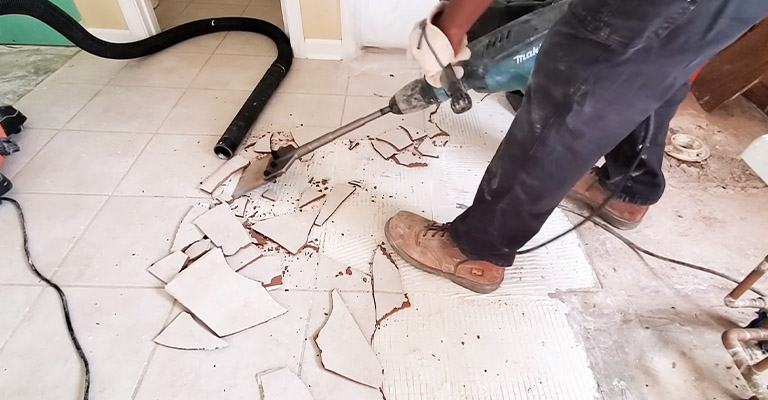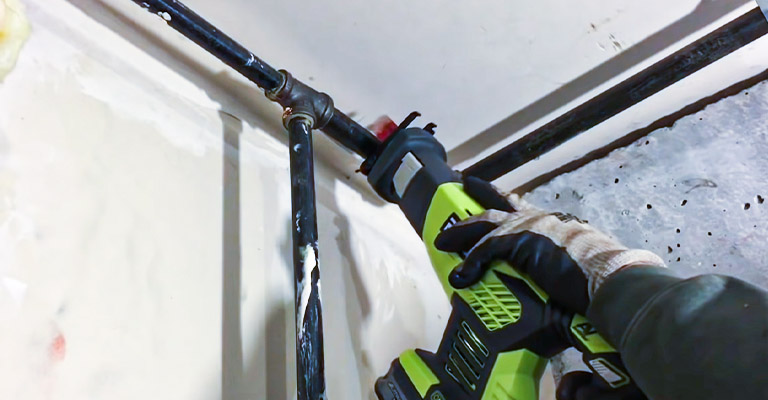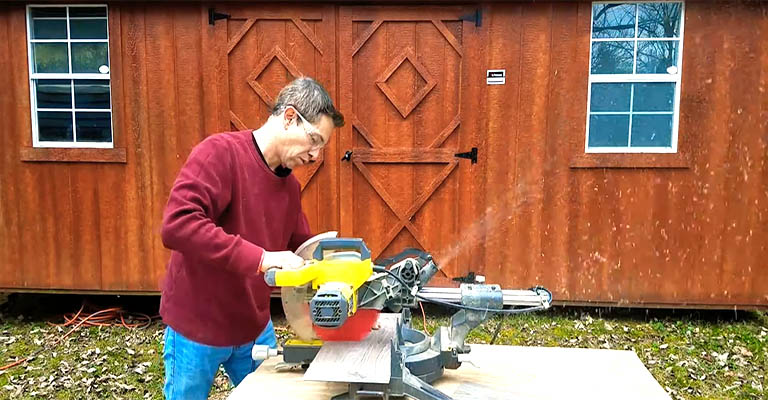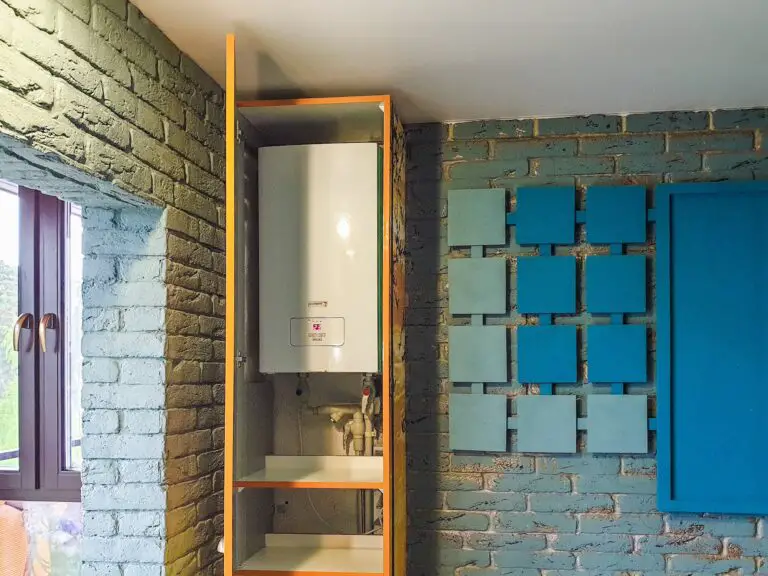How Hard Is It To Remove Tile Flooring?
There are a few reasons for wanting to remove tile flooring. One is because it has been damaged and needs to be replaced, another is because it is old, and you want a new one installed.
Removing tile flooring is a frustrating and time-consuming process. This DIY job is always filled with unknowns –
- how thick is the concrete underneath?
- Will the old grout be able to take it?
- What if I have to remove more than just tile?
Whether you have ceramic, porcelain, or natural stone tiles, removing them requires some tools, time, and patience. In this blog post, we will explain how to remove tile flooring and what are the main causes that make this task difficult.
How to Remove Tile Flooring?
Tile flooring is a durable and attractive option for many homeowners, but it can also be a challenge to remove when you want to update your floors or renovate your space.
Get Rid of the Grout First
The first step to remove tile flooring is to get rid of the grout that holds the tiles together and to the substrate.
Grout is a mixture of cement, sand, and water that fills the gaps between the tiles and creates a smooth surface. Depending on the type and age of the grout, you may need different tools and techniques to remove it.
For small areas or thin grout lines, you can use a manual grout saw or a utility knife to scrape away the grout.
For larger areas or thicker grout lines, you can use a power tool such as an angle grinder or an oscillating tool with a grout removal blade.
You should wear protective gear such as gloves, goggles, and a dust mask when working with grout, as it can create dust and debris that can irritate your eyes, skin, and lungs.
Pry up the Tiles From the Substrate
The second step to remove tile flooring is to pry up the tiles from the substrate.
The substrate is the base layer that supports the tiles, such as plywood, concrete, or cement board. Depending on the type and condition of the substrate, you may need different tools and techniques to pry up the tiles.
For plywood or cement board substrates, you can use a pry bar or a hammer and chisel to lift up the tiles. You should start from a loose or broken tile or from an edge or corner of the floor.
So then insert the pry bar or chisel under the tile at a 30-degree angle and apply gentle pressure until the tile pops off. Be careful not to damage the substrate or any pipes or wires underneath.
For concrete substrates, you may need a more powerful tool such as a jackhammer or an air chisel to break up the tiles.
Start from the center of a tile and work your way outward, creating cracks along the diagonals. You should then use a floor scraper or a shovel to remove the broken pieces of tile and mortar.
And of course, Please be careful not to damage the concrete or any pipes or wires underneath.
Clean up the Area and Prepare It for New Flooring
The third step to remove tile flooring is to clean up the area and prepare it for new flooring. You should sweep up or vacuum any dust and debris from the floor and dispose of them properly.
Also inspect the substrate for any damage or unevenness and repair it if necessary. You may need to sand, fill, level, or replace the substrate depending on its condition.
How Hard Is It To Remove Tile Flooring?
Removing tile flooring can be a hard and tedious task, but it can also be rewarding when you see your new floors.
Now come to the main business, Some of the main causes that make this task difficult are:
- The type and quality of the tile: Some tiles are more resistant and harder to break than others, such as porcelain or natural stone tiles.
- The type and quality of the grout: Some grouts are more flexible and easier to remove than others, such as epoxy or acrylic grouts.
- The type and quality of the substrate: Some substrates are more stable and easier to work with than others, such as plywood or cement board substrates.
- The size and layout of the floor: Larger or more complex floors may require more time and effort to remove than smaller or simpler floors.
- The age and condition of the floor: Older or more damaged floors may be more difficult to remove than newer or well-maintained floors.
If you are not confident or experienced in removing tile flooring yourself, you may want to hire a professional contractor who can do it for you safely and efficiently.
Is It Difficult To Remove Tiles?
This project could be very intense, and maybe not worth the bother. The process can be particularly bothersome when the tiles are thick, layered on top of one another, or unleveled. If you need to remove tiles for any reason, it’s somewhat difficult to do so on your own.
Tile flooring over concrete is installed for durability and to make sure that it’s not easy to damage it. If you are looking for a quick way to remove tile flooring without causing any permanent damage, you should consider using a tile saw or wet saw.
Tile saws and wet saws are both effective, easy-to-use tools that allow for quick and efficient removal of tile flooring. They work by using a blade to cut the tiles into small pieces, then scraping off the old adhesive.
Using these tools can save you time and money by reducing the amount of flooring damage that will need to be fixed later on.
Is It Expensive To Remove Tile Floors?
You could easily say that the price of removing the tile floor would outweigh any benefits, but does that mean it’s not worth doing? You should always do your research before taking action and make sure you have all the facts.
Yes, it can be expensive especially if you don’t know how to do it yourself. However, there are ways that you can do this yourself that will not cost a lot of money and save you time as well.
Some solutions for this problem include renting a power saw, hiring professional cleaners, and using power tools like jigsaws or grinders on your own.
Can I Remove Tile Flooring Myself?
Many people want to remove tile flooring and replace it with a different type of flooring. Can I remove tile flooring myself? Yes, but only if the tiles are installed correctly and you have a good level of experience in removing flooring materials.
You should also make sure to use a tile removal tool to make the process easier and safer for yourself. If you don’t want to get help from professionals, then you should follow our step-by-step tile removing guide.
How Long Does It Take To Remove Floor Tiles?
When you need to take down your tile flooring, it takes time and effort. If you’re not careful, you can damage the floor or even cause a fire. Removing tile flooring takes a long time. It is considered normal for a professional to spend over an hour removing one tile.
Why Would You Want To Remove Tiles?
Tile floors are an integral part of most homes. Tile flooring is a durable and flexible surface that can be installed on a variety of surfaces. However, they can be a difficult task to remove and replace with something else.
Several factors may compel a person to remove tile flooring from their home. A person might also want their floors to be more comfortable, or they might want a new style in their space.
Tile flooring is also a choice that may be made for many reasons such as:
- When tile flooring starts to look bad or needs replacing due to wear and tear, the decision may be made to remove it and replace it with something else.
- Tile flooring is not very eco-friendly and the cost of removing and replacing it with another material is worth the effort.
- If there is damage caused by pets or small children that cannot otherwise be repaired, tile may need to be removed before further damage is done.
- Tile is not the best option for some types of homes, such as those made from brick or concrete. Tile also does not work well in kitchens or bathrooms with high humidity levels.
How Much Does It Cost To Hire A Professional For Removing Tiles?
Tile removal is one of the most common home repairs. It is a DIY job that involves cutting tiles and removing them from the floor. With the help of professional tile removal services, it can be done in just a few hours.

If you are thinking about hiring professionals for this job, you should know that the cost depends on how many tiles you need to remove and where they are located in your home. The total cost also includes the equipment needed for tile removals, such as safety gear and tools.
The cost to hire a professional for removing tiles varies from one region to another. In the United States, people typically spend about $1,000 on average. They also provide homeowners with an estimate of what they can expect to pay based on the specific area of the house and their tile removal needs.
Tile removal service costs vary based on location, size of the job, and customer service. The cost also depends on the type of tile being removed. For instance, the removal of ceramic tiles can be more expensive than removing vinyl tiles because they are harder to remove.
Final Words
When your tiles gets loose, cracked, bulged, leaking water then you must have to seal the tiles, or remove them completely for fixing. Removing tile flooring from a home is no easy task. There are many steps involved in the process. You need to remove all of the tiles from the floor, sand them down, and then put a new one. With a little more effort, you can also replace it with wood or carpeted flooring that will be easier to maintain and clean. At the end of the day, is it worth it? Typically, yes because you will save on time and effort in maintenance and cleaning by not having to spend as much time on these tasks.
Removing floor tiles, whether they are ceramic tile or porcelain tile, can indeed present a set of challenges. The tile removal process can vary in difficulty based on factors like the type of adhesive used, the presence of a plywood underlayment, or the age and condition of the tiles. Broken tiles can further complicate the process, making it imperative to approach the task with caution.
Opting for a dust-free tile removal technique can be a great choice, ensuring both efficiency and a cleaner work environment. While removing tile floor might seem daunting at first, with the right tools and precautions, you can successfully complete the tile removal project. Always remember to evaluate all the tiles and their conditions before initiating the process, and consider seeking professional guidance if removing floor tiles feels overwhelming or beyond your skill set.





